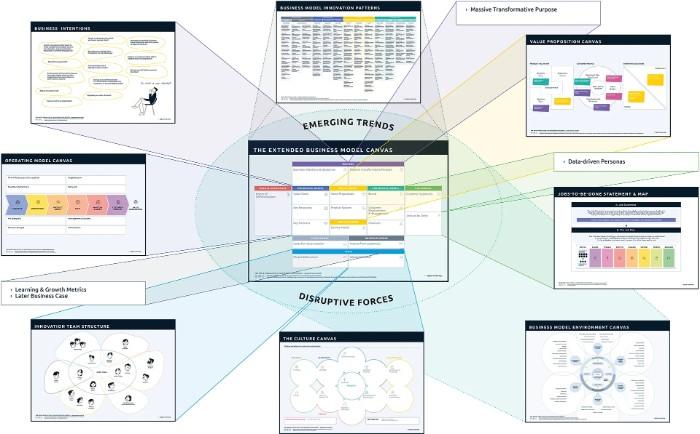What is Recurring Revenue?
Aug 06, 2024 By Rick Novak
Do you want to learn about a powerful way to boost your business? Recurring revenue is an incredibly effective tool for any company looking to grow and stay afloat in this ever-evolving digital age.
Not only does it provide significant predictability, but recurring revenue can also increase profit margins and help ensure that you've got a steady stream of income coming down the road.
In this blog post, we'll explain recurring revenue, how it works, and the benefits of implementing this model into your business strategy. Furthermore, we’ll discuss examples of successful models and why utilizing actionable data drives continued success.
An Overview of Recurring Revenue - What is It and How Does it Work
Recurring revenue is a term used to describe income generated regularly, often predetermined basis. This type of income is typically associated with subscription-based services and products, as customers pay a set amount each period to access the service or product.
It is an alternative to one-time transactions, where payment is made for a single item or service. Recurring revenue is usually described as an ongoing and predictable source of income, allowing businesses to plan more easily and accurately.
This type of steady income ensures a consistent flow of cash into the business’s bank account, which helps cover overhead costs and finance day-to-day operations. Many businesses depend on it to remain competitive and sustain growth, as customers are more likely to commit to the service or product for a longer period when a recurring payment option is available.
Recurring revenue also allows businesses to track their performance more effectively, as they can measure a product's or service's success by tracking the revenue it generates over a certain period. This helps them identify areas for improvement and create better strategies to increase customer engagement and retention.
Recurring revenue is an invaluable resource for businesses looking to become more profitable and successful. By understanding what it is and how it works, businesses can take advantage of its benefits and ensure financial stability.
Benefits of Recurring Revenue for Businesses

Recurring revenue offers a variety of benefits for businesses, as it helps them:
Ensure consistent cash flow:
Regular and predictable payments help cover overhead costs, finance day-to-day operations, and support long-term growth.
Track performance more easily:
By tracking the recurring revenue generated over time, businesses can better understand their customers and identify areas for improvement.
Increase customer engagement:
By offering subscription-based services or products, businesses are more likely to retain customers for the long-term.
Build trust with customers:
Recurring subscriptions provide a predictable experience for customers and help create strong relationships between them and the business.
These benefits make recurring revenue one of the most powerful resources available to businesses. With it, they can create a more consistent and reliable income stream and improve their overall performance.
Types of Recurring Revenue Models with headings
Recurring revenue models come in a variety of shapes and sizes.
Depending on your business’s needs, you can choose from the following types of recurring models:
Subscription-based Model:
This is one of the most common recurring revenue models, where customers pay a flat fee to access a service or product.
Usage-based Model:
In this model, customers pay for each use or consumption of a service or product. This allows businesses to track and manage usage more closely.
Freemium Model:
In this model, customers are given access to some features for free, but they can upgrade to get additional features by paying a fee.
Pay-as-you-go Model:
In this model, customers pay for each transaction or purchase as they use the service or product. This allows businesses to keep track of their expenses more easily.
No matter your recurring revenue model, it can be a powerful tool for helping your business meet its financial goals.
How to Get Started with Generating Recurring Revenue
Now that you know the basics of recurring revenue and its benefits, you can leverage it for your business.
Here are some tips on how to get started:
Define Your Offerings:
Start by clearly defining the products or services you want to offer on a subscription basis. Make sure they are aligned with your business goals and customer needs.
Determine Your Pricing Strategy:
Once you define your offerings, determine a pricing strategy that works for you and your customers. Consider factors such as the value of the product or service, market trends, and competitor prices.
Set Up Payment Processing:
Set up a payment processing system to ensure customers are accurately billed on time. This will help you manage your finances more effectively.
Promote Your Offerings:
Promoting recurring revenue offerings is important to attract and retain new customers. Use email campaigns, social media advertising, or influencer marketing to reach your target audience.
By understanding the basics of recurring revenue and following these tips, you can generate reliable and consistent income for your business.
Example Scenarios of Successful Companies Utilizing Recurring Revenue Streams
There are many examples of successful companies utilizing recurring revenue streams.
- Netflix is a classic example, as it charges customers a monthly subscription fee for access to its streaming service.
- Spotify is another company that has utilized the subscription-based model effectively. Customers can pay a monthly fee to access music streaming services.
- Adobe is one of the most successful companies using the freemium model, offering a range of services for both free and premium users.
Strategies for Growing and Retaining Customers via Recurring Revenue

Once you have established a recurring revenue model, focusing on customer acquisition and retention is important.
Here are some strategies to consider:
Develop Loyalty Programs:
Offer rewards and discounts for customers who subscribe to your services or products. This can increase customer loyalty and create more opportunities for repeat sales.
Emphasize Value:
It’s important to communicate the value of your services or products to customers. Show them how they can benefit from your offerings and why it’s worth the cost.
Encourage Referrals:
Encourage existing customers to refer others by offering incentives or discounts. This can help you acquire new customers while encouraging loyalty from existing ones.
By leveraging these strategies and growing your customer base, you can generate more recurring revenue for your business.
FAQs
What is recurring revenue?
Recurring revenue is income that a business can count on receiving regularly, often over a long period. It typically comes in the form of subscription fees or payments for services or products provided on an ongoing basis.
How can I start generating recurring revenue for my business?
There are several strategies to help you start generating recurring revenue for your business. These include introducing subscription-based services and products, offering premium membership plans, and creating recurring payment models such as installments or charging fees for extra features or add-ons.
What are some things to remember when generating recurring revenue?
It’s important to remember that recurring revenue can be unpredictable and fluctuate. It also requires a commitment from the customer, so it’s important to build trust with your customers by providing top-notch service and quality products.
Conclusion
Looking to increase your business’s long-term revenue? Recurring revenue is a useful and powerful tool to help you succeed. This model functions by ensuring a steady stream of income, providing predictability in sales, and increasing the overall profit margins of the business.
It is an incredibly advantageous strategy, but generating recurring revenue can only be challenging with understanding its details.

What Are General Collateral Financing Trades?

InCharge Debt Solutions Review

Deciphering Hedge Funds: Balancing Returns and Fees

How Much Will I Get From Social Security

Charting the Richest Amazon Shareholders of 2023: Who's Leading the Pack?

What is Recurring Revenue?

Form 1099-DIV, Dividends and Distributions Definition

Are Stocks With Low P/E Ratios Always Better?

Student Discounts: A Comprehensive Guide

